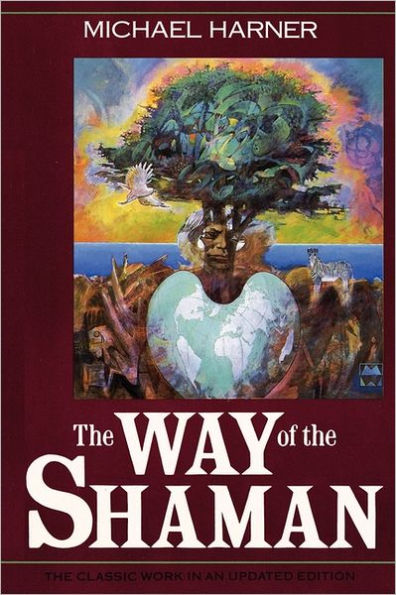Read an Excerpt
Chapter One
Discovering the Way
My first prolonged fieldwork as an anthropologist took place in 1956 and 1957 on the forested eastern slopes of the Ecuadorian Andes among the Jívaro [HEE-varo] Indians, or Untsuri Shuar. The Jívaro were famous at that time for their now essentially vanished practice of "head-shrinking," and for their intensive practice of shamanism, which still continues. I successfully collected a great deal of information, but remained an outside observer of the world of the shaman at that time.
A couple of years later, the American Museum of Natural History invited me to make a year-long expedition to the Peruvian Amazon to study the culture of the Conibo Indians of the Ucayali River region. I accepted, delighted to have an opportunity to do more research on the fascinating Upper Amazon forest cultures. That fieldwork took place in 1960 and 1961.
Two particular experiences I had among the Conibo and the Jívaro were basic to my discovering the way of the shaman in both thosecultures, and I would like to share them with you. Perhaps they will convey something of the incredible hidden world open to the shamanic explorer.
I had been living for the better part of a year in a Conibo Indian village beside a remote lake off a tributary of the Río Ucayali. My anthropological research on the culture of the Conibo had been going well, but my attempts to elicit information on their religion met with little success. The people were friendly, but reluctant to talk about the supernatural. Finally they told me that if I really wished tolearn, I must take the shamans' sacred drink made from ayahuasca, the "soul vine." I agreed, with both curiosity and trepidation, for they warned me that the experience would be very frightening.
The next morning my friend Tomás, the kind elder of the village, went into the forest to cut the vines. Before leaving, he told me to fast: a light breakfast and no lunch. He returned midday with enough ayahuasca vines and leaves of the cawa plant to fill a fifteen gallon pot. He boiled them all afternoon, until only about a quart of dark liquid remained. This he poured into an old bottle and left it to cool until sunset, when he said we would drink it.
The Indians muzzled the dogs in the village so that they could not bark. The noise of barking dogs could drive a man who had taken ayahuasca mad, I was told. The children were cautioned to be quiet, and silence came over the small community with the setting of the sun.
As the brief equatorial twilight was replaced by darkness, Tomás poured about a third of the bottle into a gourd bowl and gave it to me. All the Indians were watching. I felt like Socrates amidst his Athenian compatriots, accepting the hemlock -- it occurred to me that one of the alternate names people in the Peruvian Amazon gave ayahuasca was "the little death." I drank the potion quickly. It had a strange, slightly bitter taste. I then waited for Tomás to take his turn, but he said that he had decided not to participate after all.
They had me lie down on the bamboo platform under the great thatched roof of the communal house. The village was silent, except for the chirping of crickets and the distant calls of a howler monkey deep in the jungle.
As I stared upward into the darkness, faint lines of light appeared. They grew sharper, more intricate, and burst into brilliant colors. Sound came from far away, a sound like a waterfall, which grew stronger and stronger until it filled my ears.
Just a few minutes earlier I had been disappointed, sure that the ayahuasca was not going to have any effect on me. Now the sound of rushing water flooded my brain. My jaw began to feel numb, and the numbness was moving up to my temples.
Overhead the faint lines became brighter, and gradually interlaced to form a canopy resembling a geometric mosaic of stained glass. The bright violet hues formed an ever-expanding roof above me. Within this celestial cavern, I heard the sound of water grow louder and I could see dim figures engaged in shadowy movements. As my eyes seemed to adjust to the gloom, the moving scene resolved itself into something resembling a huge fun house, a supernatural carnival of demons. In the center, presiding over the activities, and looking directly at me, was a gigantic, grinning crocodilian head, from whose cavernous jaws gushed a torrential flood of water. Slowly the waters rose, and so did the canopy above them, until the scene metamorphosed into a simple duality of blue sky above and sea below. All creatures had vanished.
Then, from my position near the surface of the water, I began to see two strange boats wafting back and forth, floating through the air towards me, coming closer and closer. They slowly combined to form a single vessel with a huge dragon-headed prow, not unlike that of a Viking ship. Set amidships was a square sail. Gradually, as the boat gently floated back and forth above me, I heard a rhythmic swishing sound and saw that it was a giant galley with several hundred oars moving back and forth in cadence with the sound.
I became conscious, too, of the most beautiful singing I have ever heard in my life, high-pitched and ethereal, emanating from myriad voices on board the galley. As I looked more closely at the deck, I could make out large numbers of people with the heads of blue jays and the bodies of humans, not unlike the bird-headed gods of ancient Egyptian tomb paintings. At the same time, some energy-essence began to float from my chest up into the boat.
Way of the Shaman. Copyright © by Michael Harner. Reprinted by permission of HarperCollins Publishers, Inc. All rights reserved. Available now wherever books are sold.



